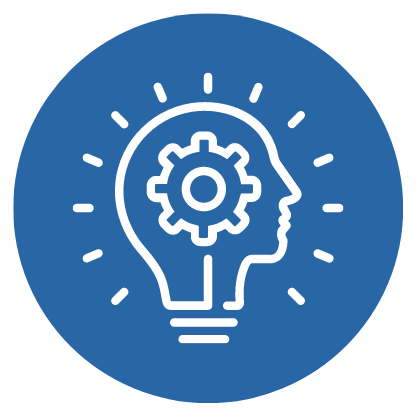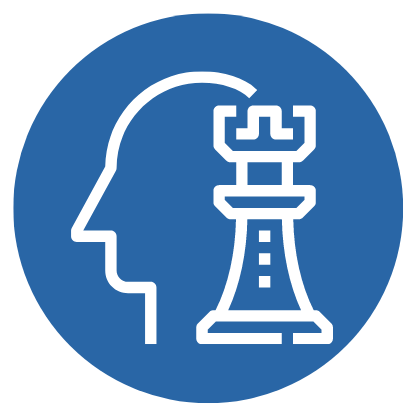Unlock the power of creative design thinking ideate and discover novel solutions to any problem!
Design Thinking Ideate is a process for generating ideas and solutions to solve a problem. Pattie Belle Hastings explains how to approach ideation in this method, emphasizing the importance of quantity, diversity, and novelty. She encourages suspending judgment to get ideas out on the table and suggests workshops and exercises to ensure every voice is heard. Mindful Marks provides tips on focusing on novelty, such as mind maps, sketches, storyboards, gamestorming, and bringing in users to ideate. Ideation is a critical step in the Design Thinking process and encourages creativity, relevance, and innovation.
Learning Outline
1. Ideation should focus on quantity and diversity of ideas.
2. Suspend judgment and ensure that all participants have a voice.
3. Focus on novelty and relevance in the ideation process.
4. Use mind mapping, sketches, skits, storyboards, gamestorming and charts to generate ideas.
5. Involve users of products in the ideation process.
Instructional Content
Design Thinking is a process of problem-solving that helps us come up with creative solutions. The most important step of this process is ideation, which is coming up with as many ideas or solutions to a problem as possible. In order to achieve the best results from ideation, it is important to have quantity, diversity, and novelty. It is also important to suspend judgement and make sure that everyone involved has a voice in the process. This can be achieved through workshops and exercises.
When ideating, it is important to focus on novelty and relevance. It is the novelty of ideas that will bring the most creative solutions. Techniques such as mind mapping, sketches, storyboards, and gamestorming can be used to help come up with these ideas. It is also helpful to involve the users of the product in the ideation process.
Design Thinking is a powerful process that can help us come up with creative and innovative solutions. Ideation is the most important step of this process and it is essential to focus on novelty and relevance in order to come up with the best ideas. By utilizing techniques such as mind mapping, sketches, storyboards, and gamestorming, as well as involving the users of the product, we can ensure that the ideation process is a success.
Leadership
Creativity and Innovation are essential skills for effective leadership, and Design Thinking is an excellent tool for developing and honing these skills. The video and transcript explore the concept of ideation, which is the process of generating ideas and solutions to a problem. The key to successful ideation is to focus on quantity and diversity, and to suspend judgment of both our own ideas and those of others. It is important to ensure that all people involved in the process have an opportunity to contribute, even if they are typically introverted. We want to focus on both novelty and relevance in the ideation process, as the sweet spot between them is where we innovate. To do this, we can use techniques such as mind-mapping, sketching, storyboarding, gamestorming, and involving users in the ideation process.
In terms of skills development for learners, it is important to emphasize the importance of creativity and innovation. Learners should be encouraged to explore different techniques for ideation, and to practice suspending judgment and focusing on quantity and diversity. It is also important to provide learners with opportunities to practice their ideation skills in a variety of scenarios. This will help them to develop their strategic thinking and vision skills. This can be done through activities such as brainstorming, problem-solving, and idea generation sessions. Through these activities, learners can develop the skills they need to become effective leaders.
Creativity and Innovation
Upskilling yourself to be more successful in personal growth and professional development can be achieved by utilizing the Design Thinking method of ideation. This video focuses on the process of generating novel and relevant solutions - quantity not quality - by suspending judgment, fostering collaboration, and encouraging diverse voices. Through the use of workshops and exercises, such as mind mapping, sketching, storyboarding, and gamestorming, this method encourages innovation and creativity.
Statistics show that businesses that invest in creative thinking are 5 times more likely to be high-growth companies than those who don’t. A case study of a successful business that employed the Design Thinking method is IBM. IBM used the method to develop their ‘Smarter Planet’ campaign, which resulted in an increase in company growth, product sales, and customer satisfaction.
Design Thinking provides a powerful tool for upskilling yourself to be more successful in personal growth and professional development. With the use of ideation, individuals can generate novel and relevant solutions to any problem. This is an invaluable skill for any professional. Investing in creative thinking is an effective way to improve both personal and professional success.
Strategic Thinking
Upskilling yourself to be more successful in personal growth and professional development can be achieved through strategic thinking and design thinking. Design thinking is a creative process that involves exploration, ideation, and experimentation to come up with innovative solutions to problems. A key step in the design thinking process is ideation, which involves coming up with as many ideas or solutions to a problem as possible.
Ideation involves suspending judgement and generating quantity and diversity of ideas. To ensure everyone's ideas are heard, you can use workshops, exercises and activities such as mind maps, sketches, storyboards, gamestorming or charts. What's most important is that the ideas generated should be novel and relevant, which is the sweet spot of ideation.
Strategic thinking and design thinking are essential skills to upskill yourself and be successful in personal growth and professional development. By understanding the design thinking process, you can use ideation to generate novel and relevant ideas, and come up with innovative solutions to any problem. This, in turn, can help you take a more creative and strategic approach to personal and professional development, and ultimately achieve your goals.
Vision
Upskilling yourself through design thinking can be a powerful tool to achieve personal growth and professional development. This video on ideation explains the Design Thinking process, which focuses on generating as many novel and relevant ideas as possible to solve a problem. It emphasizes suspending judgment, working with diverse teams, and focusing on novelty. These strategies can be applied to upskilling yourself and improving personal and professional growth.
For example, by suspending judgment and focusing on novelty, you can think of new ways to improve your skillset. This could include taking a course, reading a book, or researching a topic. By collaborating with diverse teams, you are exposed to different perspectives and ideas, which can help you grow your skillset. Working together with others can also help you develop better problem-solving and communication skills.
Upskilling yourself through the Design Thinking process can be further enhanced with the use of statistical data, case studies, and examples. For example, if you are considering taking a course, you can gather data on the success rates of past participants to make an informed decision. Similarly, case studies can provide an in-depth look at how others have used Design Thinking to upskill themselves, giving you ideas on how to do the same.
Design Thinking is a powerful tool to help you upskill yourself and achieve personal growth and professional development. By incorporating the strategies discussed in this video, you can create a plan to develop stronger skills and become more successful.
For Learners
Upskilling yourself through design thinking can be a powerful tool to achieve personal growth and professional development. This video on ideation explains the Design Thinking process, which focuses on generating as many novel and relevant ideas as possible to solve a problem. It emphasizes suspending judgment, working with diverse teams, and focusing on novelty. These strategies can be applied to upskilling yourself and improving personal and professional growth.
For example, by suspending judgment and focusing on novelty, you can think of new ways to improve your skillset. This could include taking a course, reading a book, or researching a topic. By collaborating with diverse teams, you are exposed to different perspectives and ideas, which can help you grow your skillset. Working together with others can also help you develop better problem-solving and communication skills.
Upskilling yourself through the Design Thinking process can be further enhanced with the use of statistical data, case studies, and examples. For example, if you are considering taking a course, you can gather data on the success rates of past participants to make an informed decision. Similarly, case studies can provide an in-depth look at how others have used Design Thinking to upskill themselves, giving you ideas on how to do the same.
Design Thinking is a powerful tool to help you upskill yourself and achieve personal growth and professional development. By incorporating the strategies discussed in this video, you can create a plan to develop stronger skills and become more successful.
For Employers
Design Thinking is an invaluable tool for employers and their teams. This video on Ideation, the second step of Design Thinking, provides the essential knowledge and understanding needed to differentiate yourself from the competition and to maximize the potential of your products in the eyes of customers and clients.
The main point of this video is that the focus of Ideation should be on generating quantity and diversity of ideas, rather than on quality. It is also important to ensure that all team members have a voice in the process and to suspend judgment during this step. With this in mind, the video provides key methods and processes such as mind maps, sketches, storyboards, and gamestorming to generate novel, relevant ideas.
By understanding these concepts, employers and their teams are able to envision the potential of their products and services, and to create innovative solutions to the needs of their customers. This in turn leads to higher levels of customer engagement, increased sales and profits, and greater customer satisfaction.
In conclusion, employers and their teams would benefit from watching this video and learning the content it has to offer. It provides a powerful way to differentiate from the competition, maximize customer engagement and satisfaction, and ensure a successful future for their business.
Career Path
Completing a course in Leadership based on these competencies: Creativity and Innovation, Strategic Thinking, and Vision, is key to gaining the skills and credentials to become more employable, promotable, and purposeful. With the right qualifications, you can have the upper hand when it comes to opportunities for meaningful work in high demand and high growth industries.
Watching this video and transcript on Design Thinking is the perfect way to level up your skills and start producing income-producing skills for better employability. Design Thinking is a great way to generate a diversity of ideas and solutions for any problem. You will learn how to come up with novel ideas that are both relevant and innovate, and you will also learn how to suspend judgment and make sure everyone is heard.
This is the perfect opportunity for life long learners to bridge the skills gap and gain the credentials that will lead to meaningful and purposeful work in the future. By taking this course, you will be able to gain the qualifications, knowledge, and skills needed to succeed in this field. With the right qualifications, you will have the upper hand when applying for jobs and opportunities. Don't miss out on the chance to become more employable, promotable, and purposeful with this course.
Meaning
"Creativity is intelligence having fun" is a famous quote by Albert Einstein that can be applied to the concept of Design Thinking and the ideation process. This video discusses how ideation is an important part of the Design Thinking process. It emphasizes that the goal should be to generate quantity and diversity of ideas and to suspend judgement of both our and other people's ideas. It is essential to come up with novel ideas that are also relevant in order to innovate and be successful.
This quote directly relates to the video because it encourages people to think creatively and have fun while doing it. It is a reminder that the goal should be to think outside of the box and come up with innovative and unique ideas. This is an important concept for learners and employers alike because it allows them to think critically and come up with solutions that may have otherwise gone overlooked.
Takeaway
The most important key takeaway from the video is that when it comes to ideation, quantity and diversity of ideas is important, but equally critical is a focus on novelty and relevance. We must strive to create novel ideas that are also relevant to the problem. Suspending judgment of our own and others' ideas is key to this process.










 8 Creds - Leadership
8 Creds - Leadership



